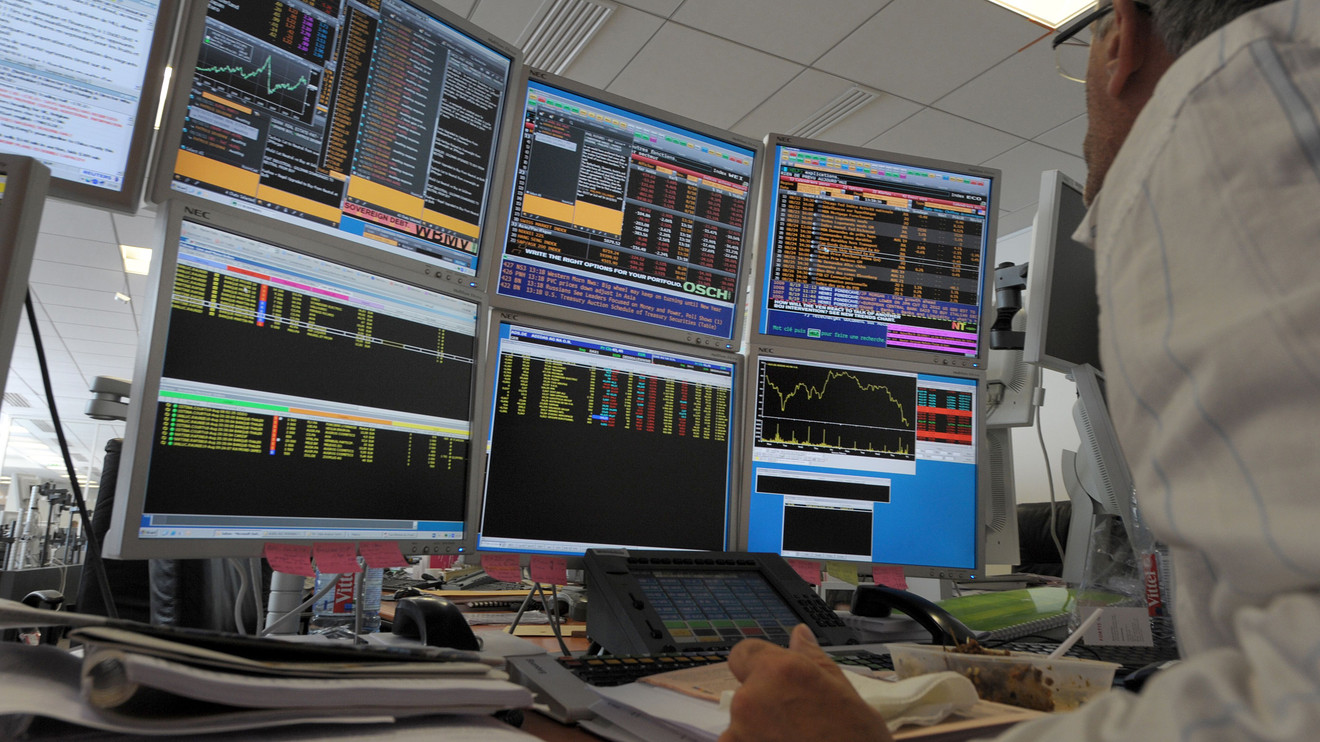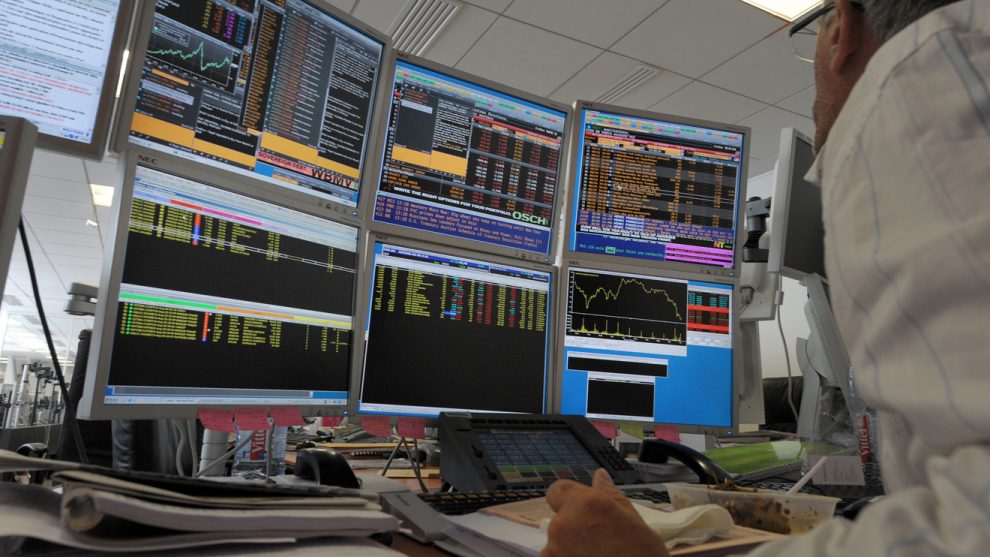
- S&P 500 retreats after notching its first record since April
- Minneapolis Fed President Kashkari advocates for a 50-basis point interest-rate cut
- June Flash manufacturing PMIs were the worst since September 2009; services were the worst since 2016
Stocks finished lower Friday amid heightened tensions between Iran and the U.S. but the Dow is on track for its best June in eight decades as investors cheered the Federal Reserve’s shift to a more dovish stance.
Friday was also quadruple witching day—the simultaneous expiration of single-stock options and single-stock futures as well as index options and index futures which is often associated with volatile markets or higher trading volumes.
The S&P 500 index SPX, -0.13% fell 3.72 points, or 0.1%, to 2,950.46, a day after the large-cap index finished at a record. The Dow Jones Industrial Average DJIA, -0.13% lost 34.04 points, or 0.1%, to 26,719.13. The blue-chip index had at one point in the session moved above its closing high set on Oct. 3. The Nasdaq Composite Index COMP, -0.24% shed 19.63 points, or 0.2%, to 8,031.71.
All three main benchmarks are also up for a third week in a row with the S&P 500 gaining 2.2%, the Dow climbing 2.4%, and the Nasdaq adding 3%, according to FactSet.
And if the market can defend its month-to-date gains next week, the Dow is poised for its strongest June performance since 1938 while the S&P 500 could have its best June since 1955. For the Nasdaq, it could be its biggest June jump since 2000.
Suggestions made by Fed Chairman Jerome Powell on Wednesday that the central bank would be willing to cut benchmark interest rates has buoyed financial markets. Investors are betting that monetary policy makers can orchestrate a soft landing for an economy that has shown some signs of stress from sluggish economic growth abroad and a prolonged tariff dispute between the U.S. and China.
“The dovish update from the Federal Reserve on Wednesday propelled stocks higher yesterday, and the feel goof factor is still doing the rounds,” wrote David Madden, market analyst at CMC Markets.
On Friday, Fed Vice Chairman Richard Clarida affirmed remarks made by Powell, saying that the case for accommodative policy has increased.
St. Louis Fed President James Bullard, the lone dissenter among voters in Wednesday’s decision to hold rates steady, said he wanted to cut interest rates this week to guard against an outlook of slowing growth and weak inflation.
Minneapolis Fed President Neel Kashkari, in an essay on the regional bank’s website, wrote that he “advocated for a 50-basis-point rate cut” to bring the benchmark rate to a range at 1.75% to 2%, from the current 2.25%-2.50% range. Kashkari isn’t a voting member of the rate-setting Federal Open Market Committee this year.
Federal Reserve Governor Lael Brainard also said that more signs of “downside risks” have emerged over the recent weeks and given these concerns, “basic principles of risk management” in the current environment of low interest rates “would argue for softening the expected path of policy.” Brainard, however, stressed that she would prefer to address financial imbalances by using macro-prudential tools than by using interest-rate policy.
Strategists say that some enthusiasm for buying equities has been dulled as investors weighed rising tensions in the Middle East, which has been whipsawing crude-oil prices. President Donald Trump on Friday said he made a last-minute decision to halt a planned retaliatory strike against Iran for shooting down its reconnaissance drone.
Intensifying Middle East conflicts, with the U.S. blaming Tehran for a tanker attacks near the a key transportation choke point at the Strait of Hormuz in the Persian Gulf, hold the potential to rattle markets if they result in an outright conflict.
Looking ahead, investors are awaiting Trump’s meeting with Chinese President Xi Jinping on the sidelines of the Group of 20 meeting of the world’s richest countries in Japan next week.
“To be sure, optimism that the American and Chinese presidents can reach an agreement to restart sincere trade negotiations when they meet next week is likely adding fuel to this ‘risk’ rally,’” wrote Marios Hadjikyriacos, investment analyst at brokerage XM, in a daily research note.
On the data front, IHS Markit said its flash manufacturing purchasing managers index in June dropped to 50.1 from 50.5 in May, the worst reading since Sept. 2009.
The flash services purchasing managers index in June fell to 50.7 from 50.9, the worst reading since March 2016.
Separately, existing-home sales were at a 5.34 million seasonally adjusted annual pace in May, the National Association of Realtors said.
Which stocks were in focus?
Shares of Constellation Brands Inc. STZ, -1.08% dropped 1.1% after the Corona beer maker disclosed that its 35.8% stake of Canopy Group Corp.’s fiscal fourth-quarter losses comes to $106 million, or $78.2 million after tax benefits.
Shares of Canopy Growth CGC, -8.12% WEED, -7.61% meanwhile, sank 8.1% after the pot company said recreational pot sales in Canada declined from the previous quarter.
Slack Technologies Inc. WORK, -3.63% shares fell 3.6% a day after the enterprise software company’s debut on the New York Stock Exchange. Slack chose to direct list its shares instead of an initial public offering.
How were other assets trading?
Overnight Thursday Asian stocks were mixed with Hong Kong’s Hang Seng Index HSI, -0.27% down 0.3%, China’s Shanghai Composite Index SHCOMP, +0.50% up 0.5%, and Japan’s Nikkei 225 NIK, -0.95% retreating 1%. In Europe, the Stoxx Europe 600 SXXP, -0.36% fell 0.4%.
Gold futures GCQ19, +0.44% extended gains, at one point trading above $1,400 for the first time since 2013.
The 10-year Treasury TMUBMUSD10Y, +1.65% yielded 2.06%, and the U.S. dollar, as measured by the ICE U.S. Dollar Index DXY, -0.55% retreated against its peers. Crude-oil prices CLU19, +0.93% rose, adding to Thursday’s gains on the back of the Middle East tensions.











Add Comment